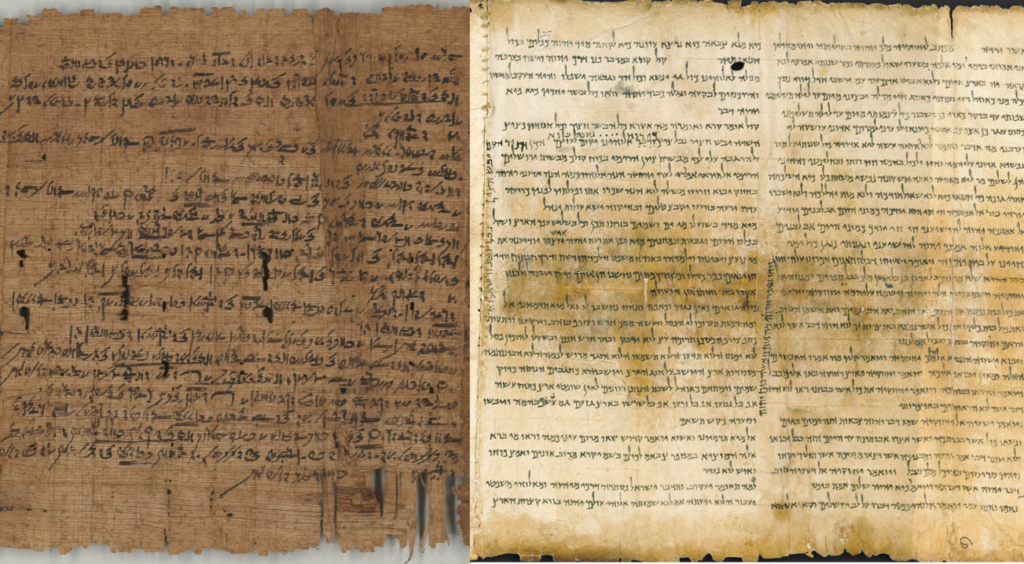Look for us at the 2023 European Association of Biblical Studies Annual Conference!
Three team members will be presenting their research at a session for the research unit “Comparing Ancient Chronographic Historiographies from Mesopotamia, Egypt, Judah, and Greece in the Persian and Early Hellenistic Periods.”

Petra Schmidtkunz’s paper, “‘And I will take you to a land like your own land…’ (2Kgs 18:32/Isa 36:17),” takes a new approach to the parallel historical accounts of 2 Kings 18-20 and Isaiah 36-39, reading them in their wider contexts as compiled literature of the post-exilic period and eliciting the ways that the notion of “the land” connotes different understandings of rule. This bears closely on an important question in the DEMBIB research program: how the world-historical events of the Assyrian and Persian periods led to scribes conceiving of future salvation in new ways. Here is the full abstract:
2Kgs 18:13–20:19/Isa 36–39 recount interactions between foreign rulers, the Judean king Hezekijah and the prophet Isaiah against the backdrop of the Assyrian invasion of Judah under Sennacherib and the looming conquest of Jerusalem by the Babylonians. Although large portions of the text cycle are identical in the two books, the parallel versions form part of different interpretations of history. This is evident in the way the texts in question are framed literarily, including different connotations of the land. In the context of Kgs, the Assyrian invasion brings an end to the Israelite monarchy (2Kgs 17) but also ushers in the decline of Judah, leading up to exile, which even Hezekijah’s righteous successor Josiah cannot prevent (2Kgs 21–25). The Hezekijah-Isaiah cycle thus serves to explain the course of history, illustrating how independent rule and control over the land are dependent on the people’s faithful relationship to YHWH. Notably, in this scenario, the land remains in human hands. 2Kgs presents dealings between different nations (Assur, Israel, Judah, Babylon) where rule can be seized by foreign kings. In Isa, the Assyrian invasion also threatens Judah’s traditional monarchy and hints to its end (see Isa 7.34–35) but through this crisis, the stage is opened up for new, more auspicious forms of rule: the Babylonian overlords are not mentioned, the Persian king Cyrus is presented as YHWH’s governor and the future will see YHWH rule directly over his people (Isa 40ff). It is understood that YHWH’s people and land do not fall to any human ruler but remain subject to his divine will alone. Sennacherib’s claim “I will take you to a land like your own land” (2Kgs 18:32/Isa 36:17) turns out to be erroneous but for different reasons in the two books: in 2Kgs, faithful Hezekijah shows how not to fall for the presumptuousness of the foreign king while in Isa, YHWH himself proves that neither the land of his people nor its qualities may be claimed by a foreign power.
Two other team members, José Rafael Saade and Joseph Cross, will also co-present a paper in the same research unit at the 2023 EABS meeting. Taking a close look at an allegorical poem about a master gardener in the enigmatic Demotic Chronicle, José Rafael and Joseph will read this complex and multivalent text closely and argue that its author adapted a prominent image associated with Persian rule in order to present a critical picture of the 30th Dynasty pharaoh Nectanebes, depicting Egypt as a “paradise lost.”
Here is the abstract:
This paper will study a passage of the so-called Demotic Chronicle (Paris, pBN 215) as an important textual source for studying new conceptualizations of territorial space in the post-Persian era. Dating from the 3rd-century BCE, the text presents a series of oracular statements followed by an exegetical commentary, and—although its nature and purpose are still largely obscure—it alludes to the native Egyptian rulers between the first and second Persian dominations (401-343 BCE) and presents a prophesy of a savior king who would deliver Egypt from the foreign invaders. In the passage under study (col. x+V.15-20), a master gardener is urged to protect his garden against a migrating desert flock. A commentary within the text equates the gardener with pharaoh Nectanebes, and the invading flocks with the Persians, making the text an explicit historical allegory.
Building on the wordplay between the Demotic kꜣmy “gardener” and kmy “Egypt,” this passage connects to the widespread motif of the Persian garden—Old Persian paridaidā “paradise.” We will argue that the use of this motif in the text is not merely decorative (cf. Esther 1:5) but represents a meaningful adaptation in its Egyptian context. In this retooling of the motif, the ideological significance of the garden as the representation of the orderly rule of the Persian king becomes a device for criticizing Nectanebes’ rule. Moreover, if the motif of paridaidā can represent—as Bruce Lincoln argues—an ideal space from a past golden age which can be reattained through a new kind of order, the identification of Egypt as a “paradise lost” would represent a fascinating subaltern adaptation of a hegemonic idea, making the text inwardly subversive. The Demotic use of the garden motif attests to the potency of the Persian paridaidā both as a motif in a textual sense and as a conceptualization of space that can provoke complex ideation on the part of a literary subaltern voice which is both historicizing and future-oriented.
We hope to see you in Syracuse and online!


